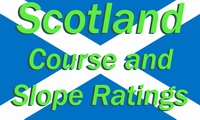|
Coming soon: a new handicap system
GOLF
LORNE RUBENSTEIN
THE Pope of Slope showed up in Toronto the other day, selling his new religion. It wasn't quite a revival meeting, but there was a feeling of excitement in the air as Dean Knuth � that's Canooth, as in truth showed Canadian golfers the new deal on handicapping they will soon adopt.
Knuth was the featured speaker at the Ontario Golf Association's Presidents' and Captains' Dinner. He had been in town for a few days, unfuddling befuddled minds about the now-acclaimed U.S. Golf Association Slope system of handicapping. It's not new south of the border, but it's mostly Greek up here.
Slope has been in the United States since Jan. 1, 1987, when the USGA introduced the system to solve what it referred to as the "portability" problem. And what a problem it was, or so the Pope and his disciples felt.
The problem was that statistics showed that the golfer who played to, say, a 10 handicap at Pebble Beach, was really a more accomplished golfer than a 10 from what Knuth likes to call Open Flats. The Pebble Beacher could beat the Flatman every time. Their handicaps were inequitable when the relative difficulties of their courses were taken into account.
But the pre-Knuth handicapping, system didn't take course differences enough into account. You played at Open Flats, you carried that handicap wherever you went. And you usually lost to a golfer from a tougher course. That wasn't fair, and Knuth meant to show the world the light.
Who could fault him his zeal and his sincerity? The former Lieutenant-Commander in the U.S. Navy graduated in 1970 from the United States Naval Academy with a degree in math, and followed up with a Masters degree in computer system technology. He's researched handicapping since 1975, which makes him the lowest handicap expert in the area.
So it was that the USGA introduced the Slope system a few years ago � convinced by Knuth. Teams of raters had been trained, and they went out en masse to come up with the Slope numbers for courses across the country. Early in 1985, for instance, Joe Luyckx, director of the Golf Association of Michigan's course rating program, led some 30 volunteers in starting to rate that state's courses.
The process occurred all over the United States, until now most courses are rated for Slope. Our Pebble Beach friend now finds his Open Flats fellow isn't a patsy. Each golfer now carries a USGA Handicap-Slope. "Slope" is derived from a graph, and refers to just that: the slope of a line on a score-vs.-handicap graph. It sounds complicated, which is why Knuth was training raters in Toronto.
But Knuth wasn't just training them in order that they become converts. He was doing so because the Royal Canadian Golf Association, the governing body of amateur golf here, has finally decided to slope-rate its courses. It will do so in conjunction with the provincial golf associations; hence Knuth and the OGA's connection.
This in itself is interesting, because thc RCGA resisted the Slope system for years. Officials felt it was too much work for too little genuine contribution to the game. But they've had a change of heart. The time has come for Slope in Canada.
This means that raters will be showing up at courses and judging them on more than length, which was far and away the main determinant of course rating before. Now they'll consider 10 factors, including topography, water, trees, bunkers, green difficulty, psychological aspects, and others. The net result will be that the golfer at a tough course such as Beacon Hall in Aurora, Ont., won't be able to find a pigeon as easily should he visit, oh, the easier Capilano in Vancouver. Each golfer's course handicap that day will be more reflective of where he establishes his number.
It all sounds rather abstruse, and is at first. But Knuth knows. Slope works and isn't difficult to compute.
It goes like this: You will have your home course handicap, which will be expressed as a decimal, say 9.2. So will every other golfer. You take that number to another layout and convert it to the course handicap you will use that day by consulting a chart at the club. Then you make your bets, certain that Mr. Knuth is telling the truth, and that the better golfer that day will win. Knuth has charts and slides to prove it. One day you'll see the Slope-raters on your course. Your handicap will never be the same.
|




